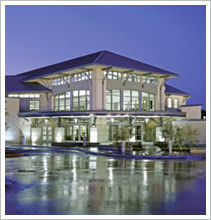
Each spring, Jews all around the world celebrate the holiday of Passover (Pesach in Hebrew), which commemorates the Jews' escape from enslavement in Egypt. Since Jewish holidays follow the Hebrew calendar, which follows the moon cycle, the exact English date changes from year to year, but Passover generally falls in March or April. This year, the first night of Passover is Monday, March 29th. The holiday is celebrated for either 7 or 8 days, based on geographical location and level of religiousness.
The Bible story is as follows:
Over four thousand years ago, the Jewish people decided to leave their homeland and look for food in Egypt. All was well until the King of Egypt, Pharaoh (pronounced FA --like apple--row), forced them to become slaves. The Jews prayed that they would be set free, and the shepherd Moses arrived to convince Pharaoh to let the Jews out of slavery. Pharaoh wouldn't listen to his request. Each time he said "no," God sent a different plague to the land -- ten plagues in all, such as hail, frogs, blood, disease, and even killing each family's first-born son. So that the Jews would be spared this last horrible plague, they were told to mark the doorposts of their homes with the blood of a lamb. This way, their homes would be passed over, hence the name "Passover." Pharoah's own son was killed due to this plague! And this is when he finally allowed the Jewish people to leave Egypt with Moses as their leader.
The Jews had to leave Egypt so quickly that they didn't have enough time to prepare. They took what they could carry, which included unbaked loaves of bread. Since there was no time to add yeast for the bread to rise, the bread baked flat. Today, we call this bread "matzah." Later, Pharaoh changed his mind and sent soldiers to capture the Jews again. The Jews were about to cross the Red Sea when the Egyptian soldiers caught up with them. God parted the sea to allow the Jews to cross, then made the water crash on top of the soldiers just as they were crossing!
To celebrate their escape, the Jews had a feast.
Today, Jews celebrate their freedom by observing Passover each year. To prepare, they clean their homes and begin the holiday by having a ritual service called a "seder" (pronounced SAY-der). In Hebrew, "seder" means "order," which means that the service has elements that happen in a certain order. Jews use a "haggadah" (hah-GAH-dah), which is a book that contains the story of the Jews' exodus from Egypt. There's also a ritual meal that has elements that represent the Jews' struggle, joy, and freedom:
- "matzah," flat bread that represents the Jews' bread that didn't have time to rise when they quickly escaped from Egypt
- four glasses of wine (or grape juice) to represent joy
- an apple/walnut/wine mixture called "charoset" (pronounced with a guttural CH as if you are clearing your throat) to represent the mortar the Jews used when building cities in Egypt
- salt water that represents tears
- horseradish to remember the bitter time
- a lamb shank to represent putting blood on the doorways of Jews' homes so that their first born sons were not killed
- a hard-boiled egg to represent spring
- a spring vegetable like parsley to represent spring
*Some help for this posting comes from the Passover Wikipedia entry, as well as the Children's book Passover, by Alice K. Flanagan.
Posted by wk




